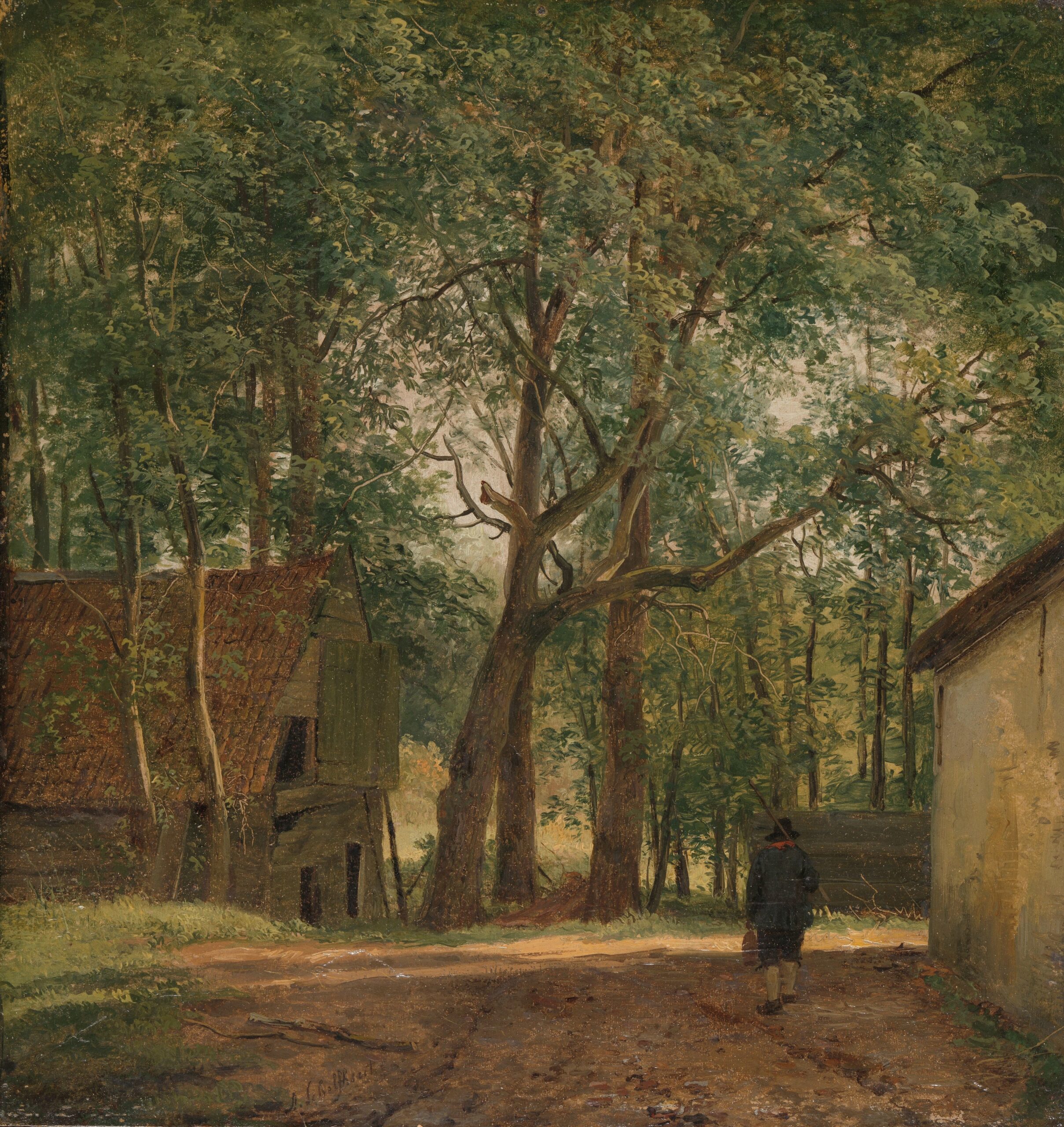Elise Tumba Kiambi – A Farmer’s Legacy
Eighteen young authors have brought nineteenth-century artefacts from the Rijksmuseum to life. They have taken inspiration from the question: what do you see when you look at these objects with an eye for invisible labour? Elise Tumba Kiambi wrote a poem in response to Andreas Schelfhout’s painting Farmyard, from c. 1820 – c. 1830. ‘The dream of an idyllic farmyard / is in pieces in a chest of drawers.’
 Andreas Schelfhout, Farmyard, c. 1820 – c. 1830
Andreas Schelfhout, Farmyard, c. 1820 – c. 1830© Rijksmuseum Collection, Amsterdam
A farmer’s legacy
A piece of fallow land materialises
4500 BC
Farmers work on the next generation,
have a material reason, (had to survive)
toil to the rhythm of the rain.
Digging, drudging, sweating.
1200
A tree is raised, from seed
carefully enrobed in soil.
Obscured from our view,
as if eyes slow growth,
as if they hinder harvests. (farmers dream, carve legacy into trunks)
1750
Value is equated with land,
changes its mind with the
highest bid.
The farmer digs dirt, irrigates generously,
but the owner generates wealth, (succumbs to compulsive hoarding)
hangs it in trees until it bears fruit.
1860
The dream of an idyllic farmyard
is in pieces in a chest of drawers. (a solid wooden form of inheritance)
The wood grain has lost its value
in between the railway tracks.
1999
Where there’s a free will, there’s a way. (some already mapped out)
A dream, of trunk or tree,
branches out into the present.
Those who can’t inherit pay for empty space.












